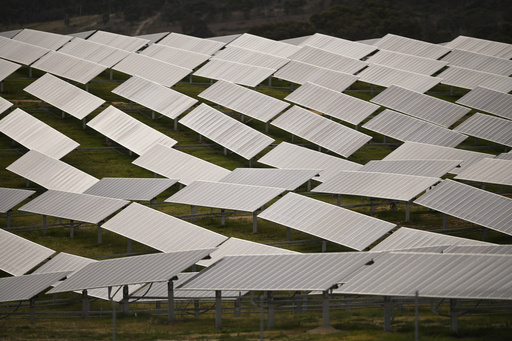An elaborate initiative to establish an extensive solar farm in a secluded area in northern Australia, with plans to transmit the generated energy to Singapore through a submarine cable, has advanced with the Australian government authorizing environmental permits for the 30 billion Australian dollar ($19 billion) venture. Sun Cable, an Australian firm, aims to construct a vast 12,400-hectare solar farm and transfer electricity to Darwin in northern Australia using an 800-kilometer (497-mile) overhead transmission line, then onwards to industrial consumers in Singapore via a 4,300-kilometer (2,672-mile) submarine cable.
The Australia-Asia PowerLink project aims to furnish up to six gigawatts of clean electricity annually, with Australian Environment Minister Tanya Plibersek remarking that this endeavor will assist in transforming Australia into a renewable energy powerhouse, consequently stimulating its economy. Plibersek expressed, “This massive project is a generation-defining piece of infrastructure. It will be the largest solar precinct in the world – and heralds Australia as the world leader in green energy.”
The project received early support from Australian mining magnate Andrew Forrest and Atlassian co-founder Mike Cannon-Brookes. The plans for the solar farm were highlighted during a state visit by former Singapore Prime Minister Lee Hsien Loong and Australian Prime Minister Anthony Albanese as part of a ‘Green Economy’ agreement in 2022.
In January 2023, the project faced a setback when Sun Cable went into voluntary administration due to a funding dispute between Forrest and Cannon-Brookes. However, by May of the same year, a consortium led by Cannon-Brookes’ Grok Ventures acquired the company, completing the takeover in September 2023.
Cameron Garnsworthy, the managing director of SunCable Australia, expressed satisfaction at clearing a significant regulatory obstacle and indicated that the company would now focus on the subsequent planning phase to advance the project towards a Final Investment Decision targeted for 2027. The company anticipates commencing electricity supply in the early 2030s.
Energy has been a contentious topic in Australia for almost twenty years, given its dependence on coal, gas, and revenues from exporting these resources to support its economy. This reliance has historically positioned Australia as one of the planet’s largest per capita emitters of greenhouse gases. In June, the primary opposition party unveiled intentions to construct the nation’s first nuclear power facilities by 2035, ensuring a divide among major parties on how Australia addresses its greenhouse gas emissions, with elections slated within a year. The major parties have not presented matching carbon reduction strategies since 2007.
Plibersek highlighted the contrast, stating, “Australians have a choice between a renewable energy transition that’s already underway creating jobs and driving down prices; or paying for an expensive nuclear fantasy that may never happen.”
